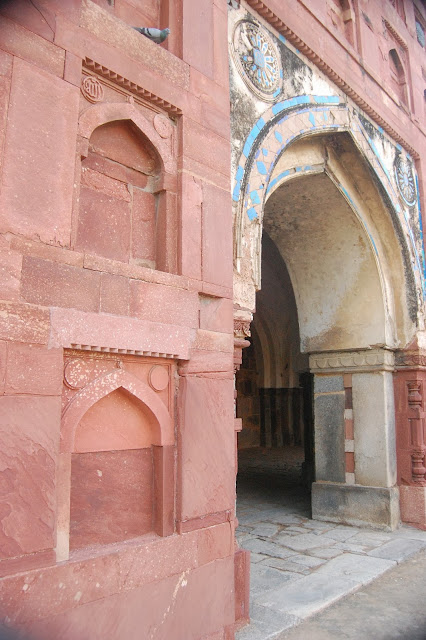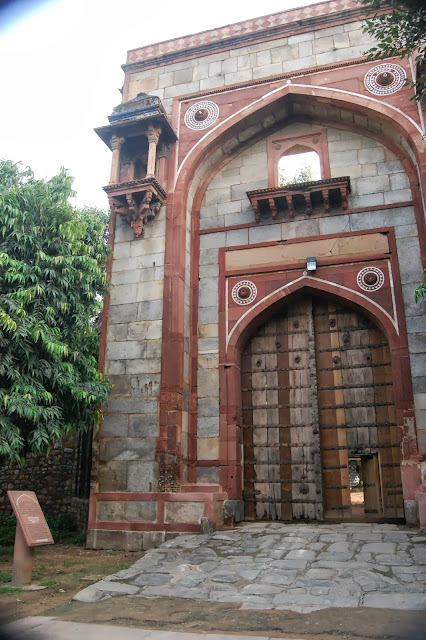I have been taking pictures of the Humayun's Tomb since 2006. Last week I had a sudden urge to revisit the tomb, especially after its grand opening (read: "The Emperor's new Tomb"). The pictures I have taken of this tomb look almost the same. Yes, it is the same monument. But I realised it was also the way in which I was "seeing" the monument. I was never interested in the history of this monument, the architectural nuances.
This time, I felt, it was time to expand my understanding of this monument.
Brief History:
Known as the precursor to the Taj Mahal, Humayun's Tomb was build by Haji Begum (Humayun's widow) in 1569-70, 14 years after his death. Often described as the "necropolis" of the Mughal Dynasty, this houses around 150 graves. A beautiful grave, for sure.
The restoration took "6 years and 200,000 man-days of painstaking work done by craftsmen".
This tomb provided shelter to Bahadur Shah Zafar in 1857, and in 1947, served as a refugee camp during Partition. Read a very detailed piece on this monument "After Humayun, who?"
-------------------------------
Brief History:
Known as the precursor to the Taj Mahal, Humayun's Tomb was build by Haji Begum (Humayun's widow) in 1569-70, 14 years after his death. Often described as the "necropolis" of the Mughal Dynasty, this houses around 150 graves. A beautiful grave, for sure.
The restoration took "6 years and 200,000 man-days of painstaking work done by craftsmen".
This tomb provided shelter to Bahadur Shah Zafar in 1857, and in 1947, served as a refugee camp during Partition. Read a very detailed piece on this monument "After Humayun, who?"
-------------------------------
Directions to Humayun's Tomb/ Afsarwala Tomb Mosque/ Arab Serai/ Barber's tomb
The wait was worth it - waiting for the encircling birds to be captured against the monument
Isa Khan Tomb
Bu Halima Enclosure (Before Renovation)
Bu Halima Enclosure (After Renovation)
Arab Ki Sarai


















